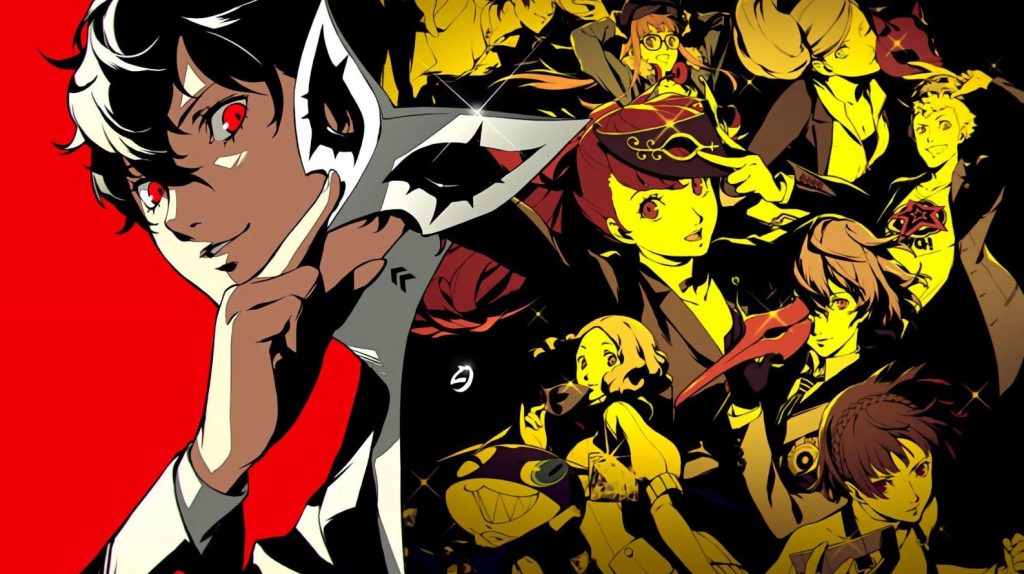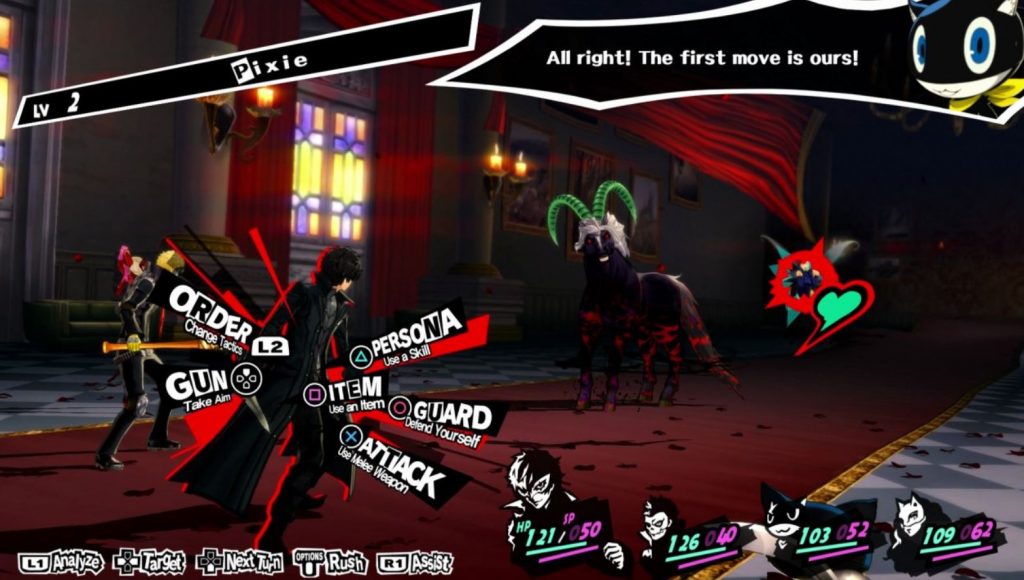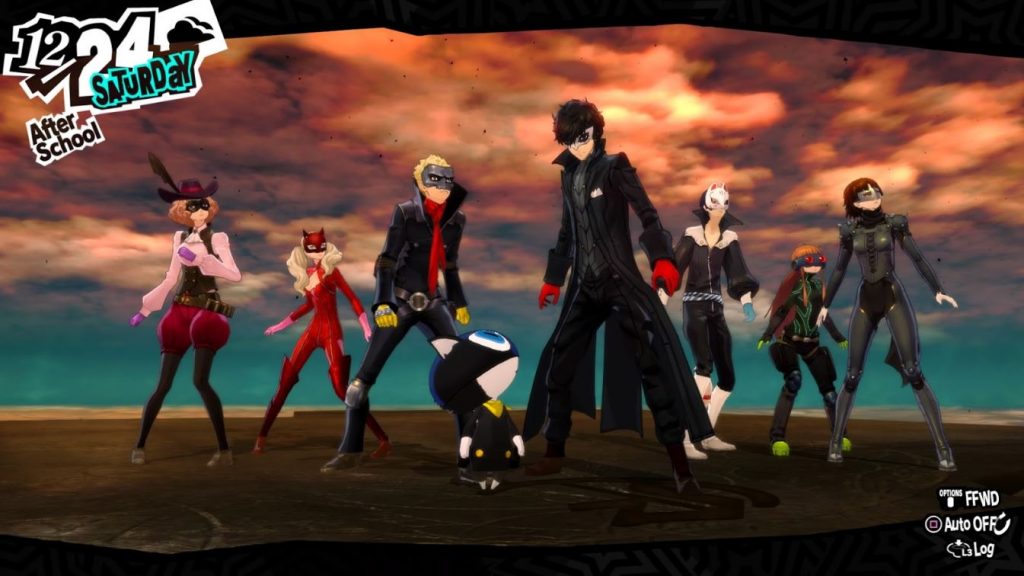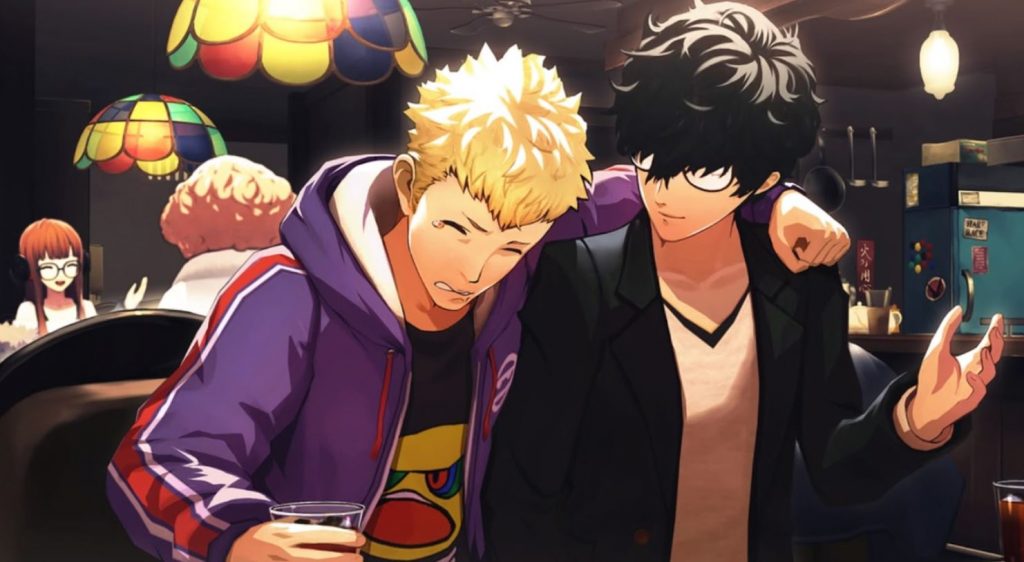
Persona 5 Royal Review: poignant and relevant even in the smallest of moments
Finishing Persona 5 Royal left me with the same feeling I felt when I completed the original game three years ago: I wish I had more time.
I beat the original Persona 5 in 94 hours. I beat Persona 5 Royal in 112, and even with that additional time I didn’t get to do everything I wanted to do or see everything I wanted to see.
For a game that’s playtime is in the triple digits, there’s a breezy, expert pacing to Persona 5 Royal that kept me diligent and attentive to its story of a group of high school students dragged into the supernatural, despite having already played through it once before. Even as I made the most of my time in that story, bringing in lessons learned from the first time I played it, I never felt like the time I spent with these Phantom Thieves was enough. This was the same sentiment that was the thesis of my feelings on the game three years ago, and it’s something I still can’t shake after experiencing it all again, even with Royal’s wealth of new content.
Persona 5 Royal feels like reflecting on a group of friends who I only get to see every few months, or maybe I don’t even get to see together at all anymore. I retread the old memories, maybe get to make a few new ones, but I still have to watch the days on the game’s calendar tick forward, knowing that time is passing each of us by with every exam taken, dinner eaten, and heart stolen. I cherish every moment I can, but I know there’s a point where we’ll reach the end and have to go our separate ways again. Even after 112 hours, roughly 20 of which were made up of new events, faces, and memories, I find myself clinging to things I experienced in hour 30 or 70, as if they’re long lost echoes of the life we all once lived together. And all I can wonder now is, when I see my friends again, will things be the same?
Much of this melodramatic introspection comes from how different Royal ultimately is from the base game. While my play times might make it seem like there is only 20 hours worth of new content tagged on at the end, the threads that lead to this new conclusion are sewn throughout the original story.
At first, Persona 5 Royal seems to be largely the same as the original. Joker, a high school student, has been falsely accused of an assault crime, and is forced to relocate to Tokyo where the criminal label was very quickly attached to him within his new school at Shujin Academy. Once there, he finds out he has an ability to travel to a supernatural world called the Metaverse, where people’s distorted desires take shape. This begins with an abusive volleyball coach named Kamoshida seeing Shujin as a castle of which he is the king. In the Metaverse, this castle stands where Shujin is supposed to be, and a distorted version of Kamoshida is there, dressed in a crown and cape and torturing cognitive versions of his students.

But Joker and his friends realize that, by stealing a treasure from these shadows in the Metaverse, these same villains will have a change of heart and confess their crimes in the real world. These dungeons, or Palaces, are the stage on which Persona 5 Royal is set. This group of high school students decides to enter these Palaces to steal the desires of corrupt authority figures, and become the Phantom Thieves of Heart. As their targets reach higher levels of status in Japan, they become a rallying point for the country to stand up against corruption, all leading into a larger conspiracy and how the Metaverse is the center of it all. While it has its share of heavy-handed symbolism, Persona 5 Royal feels just as timely now as it did back in 2017, and even without all the new characters and stories it brings to the original game, it still feels pointed and relevant.
Each heist in the Metaverse is a mix of dungeon crawling, turn-based battles, and visual novel-style dialogue. There’s even some simple stealth elements thrown in for good measure. Its turn-based systems are fairly straightforward, with elemental weaknesses and strengths being the core of most fights, but new tweaks in Royal add layers of strategy absent from the original game.
Among these changes are the Disaster Shadows, randomly-spawning enemies who counterattack once hit for heavy damage and self destruct once defeated, requiring careful consideration of your abilities as you search for their weaknesses. Each character also gets new abilities like Showtime attacks, which have pairs of Phantom Thieves unleashing theatrical finishing moves (like the local delinquent Ryuji Sakmoto and the passionate artist Yusuke obliterating an enemy who interrupts their dinner) that can turn a fight around in a pinch. Then on top of all these additions, entire boss fights are reworked to make them more challenging, as well as to shake things up for people who might’ve played through the game the first time.
But despite the Metaverse being the focal point of everything Persona 5 is, it takes up maybe 20 or so hours at most of the game’s 100 hours. The rest of it takes place in the real world, and more closely resembles a social sim, all with perks that help you fight more efficiently in the Metaverse.
However, while it’s presented as secondary to the Palaces and the heists, the social elements are where Persona 5 Royal’s heart truly lies. Nearly every major character you meet, whether they be a party member, part of Shujin’s faculty, or people around Tokyo who assist the Phantom Thieves somehow, is considered a Confidant of your supernatural, crime fighting life. Each of them has a fully-realized arc to see through, which is beneficial from a gameplay standpoint, as each offers perks like improving abilities and item efficiency, but also is where most of the game’s best character writing comes into play.

More than most of the Palaces, my fondest memories of Persona 5 Royal are in smaller moments outside the scope of its tale of rebellion. Stories like helping my best friend and unrequited love Ryuji help his former track teammates after they had a falling out, working at the gun shop with Munehisa Iwai, who appears a crotchety old man on the surface, but has a checkered past he wants to keep secret from his son, or getting closer to my caregiver Sojiro Sakura, are some of the highest of Persona 5 Royal’s highs.
But while those stories are great, they were also in the original Persona 5. Royal brings a few new faces, and while they initially might seem like just additions to bring more Confidants to the game, I wasn’t prepared for how important they would turn out to be when I reached the point where Royal became more than just a definitive edition of what came before. The two major players are Kasumi Yoshizawa and Takuto Maruki. Kasumi is written into some of the earliest beats in Royal, but she’s more of a side character throughout all of Persona 5 proper. She’s a gymnast and honor student at Shujin, but she’s also a new party member who stumbles her way into the supernatural lives of the Phantom Thieves. I was surprised at how absent she was for long stretches of time, but she came into the spotlight in the new third semester exclusive to Royal.
Maruki is Shujin’s new counselor, who comes to work at the school on a part-time basis after Kamoshida’s crimes against the students are brought to light. The addition of a character like Maruki allows Royal to challenge its own assertions of the value of confronting the truth, regardless of the pain it might bring us. He also is able to give characters more time to shine and reflect on things that happen than many of them were given before, and all of this only scratches the surface of how well-realized Maruki is in a game of exceptionally written characters.
That’s not to say everything in Royal’s characterization is perfect, or even better than it was in the original game. Despite some salient efforts from Atlus West’s localization team to make homophobic scenes less so, Persona 5 Royal doesn’t extend a hand to queer people like P-Studio at least attempted to in Catherine: Full Body. There’s tangible romantic tension in several Confidant arcs with characters like Ryuji and rival Goro Akechi, certainly more than there is in pretty much every relationship with female characters, but Joker is still unable to enter a relationship with a man.

While Kamoshida’s storyline is about the teacher’s physical and sexual abuse of Ryuji and Ann Takamaki respectively, the game still makes the former the butt of physical humor and the latter the victim of harassment and sexualization, even at the hands of her own friends. As well intentioned as its themes are, when it comes to practicing them itself, Persona 5 Royal makes no attempt to do right by the people it stands up for.
It’s hard to ignore that Persona 5 as a sub franchise has so holistically ingrained these lapses in its own values, to the point where, when given the chance, nothing was done to make these things right. But even when those poor decisions have stuck with me over the years, they’re such small footnotes in a 112 hour game that they’re eclipsed by the memories I have of the good times. Without saying too much, Royal’s conclusion ends in such a starkly different place than Persona 5 did originally that I’m looking upon every moment, whether it was one I previously experienced or something added in Royal, with a renewed appreciation and a bittersweet weight on my heart.
The last time I saw the Phantom Thieves they were a group of friends ready to take on the world together, but Royal had these students turned superheroes, and by extension myself, wondering what the future looks like in a reformed world. It might be different, and in the long run, it might be better. But for now, it kind of hurts. So all I can do now is reminisce about the good times we had.
Until Persona 5 Scramble: The Phantom Strikers, at least.





